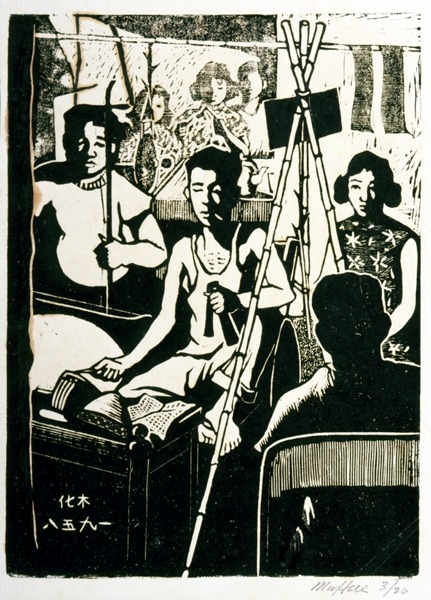The Woodcut Print Movement in Singapore
From the Mainland to the Southern City
The Japanese occupation of Singapore awakened a sense of nationalism among Chinese residents. For those who escaped to Singapore to avoid the internal war in China, the victory of the Communist Party and the establishment of the People’s Republic of China meant the loss of their homes. These events motivated the Chinese residents to build their own country in a place they originally saw as their temporary home. Thus, Singapore was established in 1965, followed by the independence of the Federation of Malaya from Great Britain in 1957. Amid postwar reconstruction and the independence movement, young painters became aware of the real social situations facing them, such as poverty and the inhumane labor conditions of people at the bottom of society. Representative artists from this generation included Tan Tee Chie (1928–2011), whose works harshly criticized society, and Lim Mu Hue (1936–2008), whose works showcased the overlapping lives of itinerant performers and Chinese migrants. Their socially oriented subjects were developed in line with the woodcut movement promoted by Lu Xun in the 1930s and expanded as the Chinese moved from one place to another. In Singapore, Thailand, and Indonesia, woodcut prints were delivered and developed in ways that were unique to each country.
[Rawanchaikul Toshiko]

Tan Tee Chie "Transaction" 1953 woodcut on paper

Lim Mu Hue "Singer on the Street" 1958 woodcut on paper
